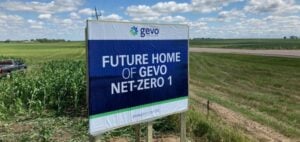Data published by S&P Global Commodity Insights reveal a significant slowdown in the voluntary carbon credit market linked to renewable energies. In March, renewable energy credit retirements reached only 3.5 million metric tons, representing a 34% decline compared to the 5.3 million recorded during the same period the previous year. This decrease follows several months of intense activity within voluntary certificate markets, characterized by strong volatility in traded volumes and price fluctuations.
Verra and Gold Standard report declines in retirements
Key market players have reported notable decreases in their operations. Verra, a major certification body in voluntary carbon markets, saw its credit retirements fall by 4.5% in March, totaling 2.3 million metric tons. Meanwhile, the Gold Standard registry faced an even sharper contraction, showing a monthly decline of 51%, with only 1.2 million metric tons retired. These figures highlight a general slowdown in transactional activity within the sector’s most influential platforms.
Over the same period, the issuance of new renewable credits experienced an even steeper drop, falling 55.7% compared to the previous year, with only 4.03 million credits issued in March. This downward trend particularly affected the two main registries: Verra, which reported a 50.8% decrease in issuances, and Gold Standard, whose monthly issuances fell by 46.3%. This phenomenon may indicate a slowdown in launching or validating new certified projects, thus limiting the supply available to buyers.
Moderate price increase despite lower volumes
Despite this significant reduction in retirements and issuances, renewable energy credit prices recorded a slight increase of 5.7% in March. This price increase is mainly attributed to a more rigorous selection process by buyers, who now favor credits that have undergone thorough prior due diligence. Thus, the lower availability of volumes seems to have increased the attractiveness of credits from recognized projects, for which market participants are prepared to pay a premium.
The medium-term outlook for the global renewable energy certificate market, however, remains favorable. A recent report forecasts a compounded annual growth rate of 8.4% in the sector through 2030, estimating the market could reach up to $45.45 billion. Despite current difficulties, these forecasts may prompt investors to adjust their strategies to benefit from future market developments.
Strategic implications for industry professionals
In response to recent fluctuations, participants in the carbon credit market face a need to reassess their strategic approach. The dynamics observed by S&P Global Commodity Insights may prompt professionals to consider the stability of credit flows and their potential impact on future purchasing and investment decisions. These data represent a strong signal, underscoring the importance of continuous strategic monitoring in a sector particularly sensitive to supply and demand variations.






















